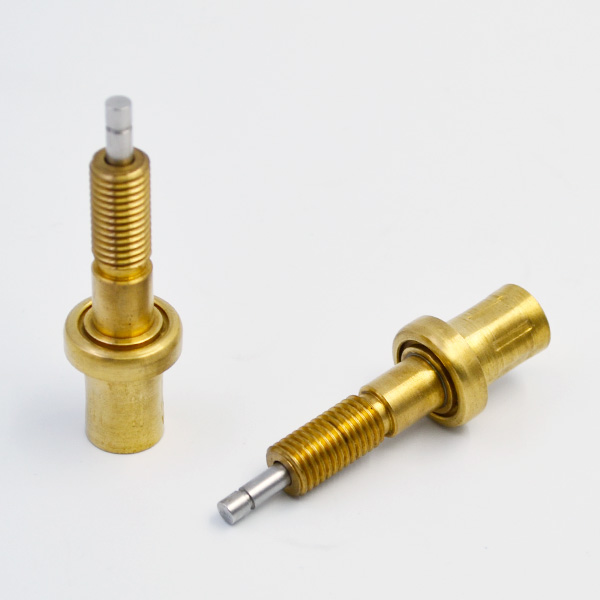The application of programmable logic controller (PLC) in the automation of microprocessor-based relay protection is quite common.
It has many advantages, such as convenient programming, easy debugging, convenient docking, high stability and so on. The application of PLC in microprocessor-based protection is discussed in order to provide some reference. Under the background of the continuous development of computer information science and technology, the current microprocessor-based protection further realizes the functional upgrading of remote monitoring and call, improves the instantaneity and reliability of power system relay protection function, and creates conditions for the realization of real-time and convenient power system management. With the continuous improvement of the level of power automation, the relatively complex functions such as power self-switching, motor start-stop protection and so on need to rely on higher quality programmable controllers to achieve. The use of programmable controller for microprocessor-based protection and the control function logic management through pre-programming can effectively improve the automation and instantaneity of microprocessor-based relay protection. The realization of PC protection function of PLC depends on the PLC control platform. The hardware structure of this platform is composed of several components with different performance, which can realize coordinated control of motor operation system. The control function of the PLC platform is circularly invoked by program software to realize the specific control of initialization, start-up and timing interruption of the microcomputer system. The circulation sequence of the sub-modules of the PLC platform is shown in Figure 1.

At present, the application of PLC in the relay protection device of micro-computer is mainly through the modularization of the hardware of PLC embedded in the motor action control system, which realizes the effective docking between the programmable controller and different types of micro-computer systems.
The logical control instruction data is input through the human-computer interaction interface, and the transmission of the action instruction is completed through the information processing and storage inside the PLC. The operation control logic of PLC begins with the detection of the working state of the control target components.
Firstly, the working signal of the computer obtained by the information input terminal of the computer protection device is judged. In the working state of the microcomputer, the working state of the microprocessor-based protection device can be checked and the working voltage of the motor can be mainly measured. If the motor is under-voltage and running normally, it shows that the docking of the microprocessor-based protection device and the motor system is feasible. If the voltage measurement results do not conform to the above conditions, the software design should be adjusted. The control function of PLC in microprocessor-based protection mainly consists of three parts: instruction editing, program compiling and command execution.

The instruction editing and program compiling are accomplished by the upper computer in the platform, while the command execution is accomplished by the control device. Usually, the command execution control device of PLC is embedded in the microprocessor-based relay protection system in a modular form to realize the effective execution of control actions. The overall realization structure of PLC microprocessor-based protection is shown in Fig.

2. Among them, the functions of the upper computer of the PLC system mainly include: (1) programming language setting.
PLC upper computer uses standard language IEC61131-3 to program; (2) intermediate language compilation. PLC host uses bi directional graph analysis or finite automata to generate intermediate language; (3) human-machine interaction and decompiling.
The controller completes the instruction input through the debugging interface, and the logic code decompilation is realized by the upper computer of PLC. The functions of PLC system control device mainly include: (1) command interpretation and execution. The control execution device is interpreted and executed by “virtual machine”. Modularization is embedded in the microprocessor-based protection system, which has relatively independent functions. (2) Data exchange of control commands for microprocessor-based protection. PLC control device realizes the exchange of instruction input, output and virtual machine data, and encrypts and protects the above data exchange process; (3) Control instruction tracking. The PLC control device tracks and feeds back the command processing and control action execution debugging. Relying on embedded modular operation system, programmable controller PLC’s microcomputer protection control can be integrated with relay protection system and become a sub task system of the whole system protection and control. Its specific implementation functions are as follows: (1) the virtual machine module is used to explain the execution of PLC code segment, that is, to interpret and execute the intermediate code compiled and downloaded to the specific location of the device, and (2) algorithm library module. Store algorithm block for virtual machine call to complete the corresponding functions, and can be expanded; (3) debugging module establishes channels to communicate with the host computer, accepts debugging commands and returns to the virtual machine status and internal data display in the debugging terminal.
In the past, electromagnetic relays were widely used in the control of microprocessor relay protection. The protection action standards of this kind of protection are different, and there are obvious defects in system setting and coordinated action of relay protection. At the same time, the traditional time relay has obvious delay error in the process of relay protection, and the error fluctuates greatly. The problem of time connection between upper pole and lower pole of relay protection often occurs, which leads to the occurrence of step-by-step tripping fault of microcomputer system. The introduction of PLC in microprocessor-based protection system can effectively avoid the above problems. At the same time, PLC uses electrical ladder diagram language, which is easier to operate and easy to be familiar with by electrical technicians. At the same time, the function of PLC is more comprehensive, with counting, timing, positioning, communication and other functions, which can meet the requirements of intelligent automatic control of micro-computer system. In addition, PLC adopts fault self-diagnosis and self-recovery measures in both hardware and software, which greatly improves the anti-interference ability of PLC. Therefore, the application of PLC in microprocessor-based protection will improve the reliability of power system operation in an all-round way. In summary, thermostatic element with the continuous improvement of science and technology level, microprocessor-based protection devices have shown the overall characteristics of automation and intellectualization.
The research and application of programmable controllers have gradually deepened and matured. The introduction of PLC in microprocessor-based relay protection system can realize effective microprocessor-based protection through embedded operation, reduce the damage of motor operation fault to power system, and improve the use of electric power.
Reliability and safety.
